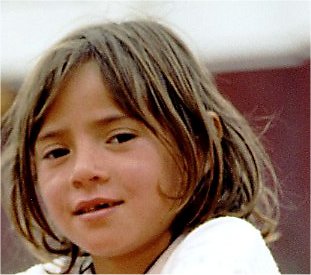Street Children in Colombia
In Bogota, the capital of Colombia, the street children are known as “gamines”. But this is the polite name. More frequently they are referred to as “throwaway children”.

Colombia is a country which has been shattered by civil war for many years. Poverty is rife. Unemployment, a shortage of housing and a complete lack of social welfare threatens the very existence of much of the country’s population. It is often the children who suffer most in this cycle of poverty and family disintegration. They are left to their own devices and sent out on to the street to work, beg and steal. Parents, struggling to survive themselves, often have very little interest in the fate of their children. The gamines, orphans and outcasts form street gangs to protect one another and counter their loneliness. They steal to survive, work as drug runners, take drugs themselves and sniff glue to mitigate the hunger, cold and misery.
In some areas these small hungry thieves and their criminal activities drive customers away from local businesses. The disadvantaged traders devised a solution that is almost unbelievable. They hired “death squads” to clean up the streets, and during the 1990s thousands of street children were just murdered.
Something to smile about at last?
More recently numerous individuals and voluntary organisations have launched programmes which aim to wean the children away from their lives of street crime and re-integrate them into society.
SOS Children’s Villages set up its “Nueva Vida” Social Centre in the San Vitorino district of Bogota as early as 1990. The Centre provides a place where the gamines can sleep and be fed. But it is not always easy to persuade the children to give up their previous existence. Street life is basic, harsh and unpleasant. But the gangs to which the children belong become substitute families and provide them with a basic level of comradeship and security. They do not adapt easily to the requirements of a more ordered and social environment. However, the staff there are now loved and respected by the children as you can see.
“Nueva Vida” found that its success rate in rehabilitating street children was improved by involving mothers in the work and activities of the centre. Increasing the awareness among women and children that they can actively shape their own lives, and that a life away from the street is possible, is a process of many small steps. But with care and perseverance the Centre is helping many families, who used to be outcasts of society, to find their way back to a life.

 Return to Schools Wikipedia Home page…
Return to Schools Wikipedia Home page…
